Are you about to discover Vietnam? Don’t miss visiting all the monuments of Huế!
With its green rice fields, its varied architecture, its exciting history and its dream beaches, Vietnam has become one of the favourite destinations of tourists in Asia in a few years. Ho Chi Minh, Da Nang, Hanoi, Hoi An, you will not miss extraordinary places to visit in Vietnam during your stay.
Among them, located in the central region of Vietnam, the city of Huế is an indispensable one, to add urgently to your itinerary. Considered as the cultural heart of the country, the capital of the province of Thua Thien-Huế, is less than a hundred kilometers from Da Nang, and attracts nearly three million tourists each year. It must be said that the city, dominated by mountain Ngu Binh (known as the Royal Screen) and crossed by the River des Parfums, offers sumptuous landscapes, as well as an exciting cultural heritage. In this ancient imperial capital, the whole of the monuments of Hue is undoubtedly one of the visits not to be missed in Vietnam.
Is this mythical city on your way? Here are some practical information to visit the collection of monuments of Huế.
History of the ensemble of monuments of Huế
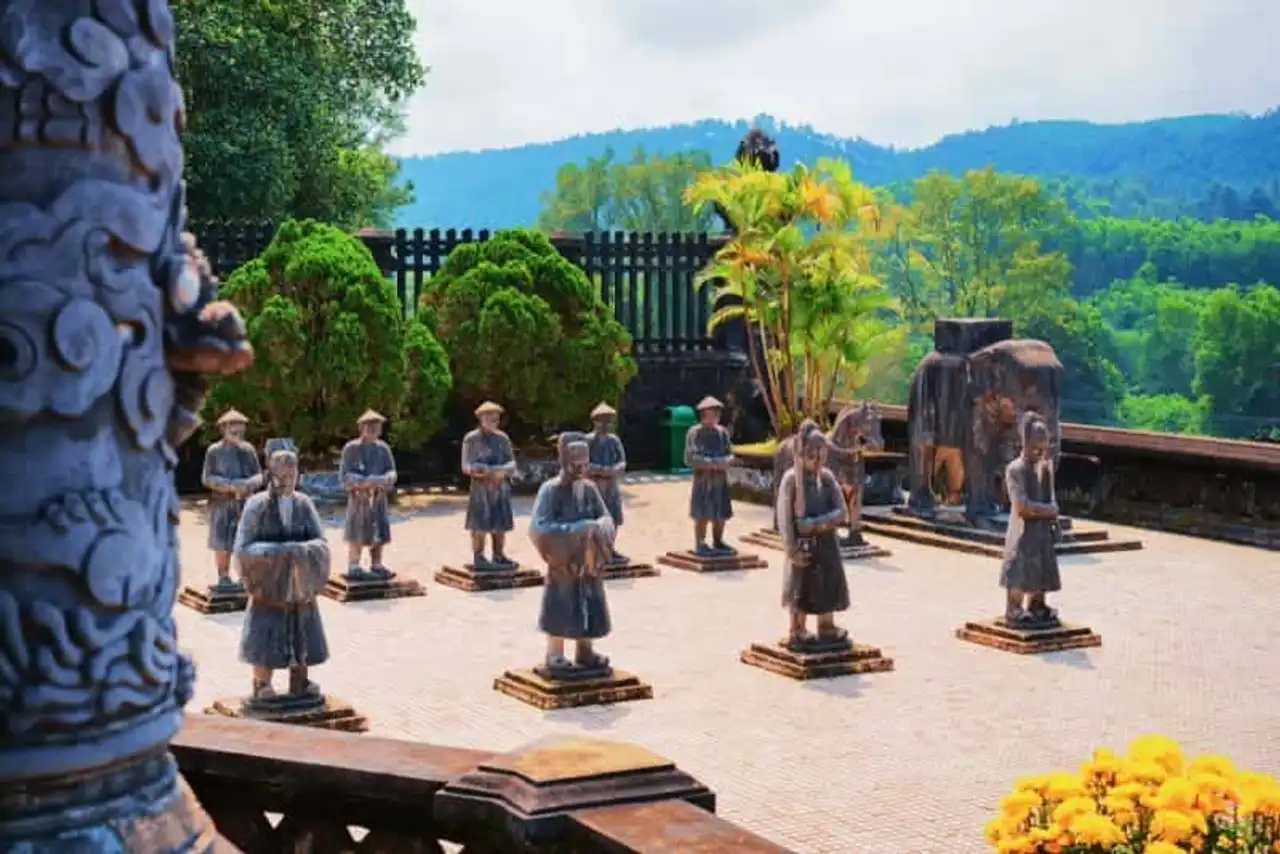
Photo credit: Shutterstock / Roman Babakin
In 1802, the last imperial dynasty of Vietnam, dynasty of Nguyên , choose Hue as capital. The Imperial City, which is then built, is openly inspired by the Forbidden City of Beijing. The imperial city of Huế thus becomes the place of residence of the Emperor and his family, and then consolidates the government buildings, as well as many temples.
It is in the Forbidden City of Hue that the thirteenth and last emperor, announces the end of the Nguyên dynasty in 1945. It was during his reign that the city was colonized by France. During the Vietnam War, a large part of the Imperial City was unfortunately destroyed, and today only about ten buildings remain. Despite this, since 1993, Huế’s collection of monuments has been classified as UNESCO World Heritage.
What to see and do to all the monuments of Huế?
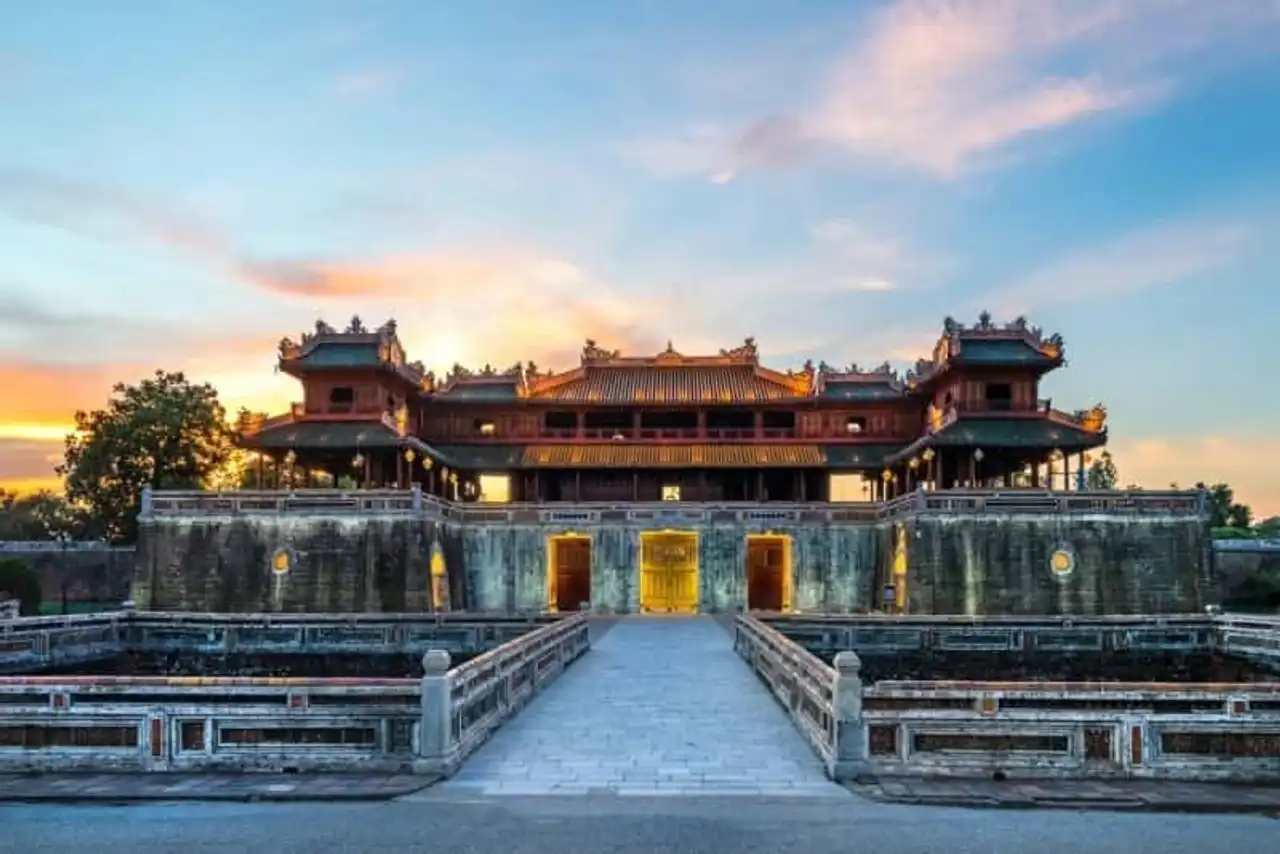
Photo credit: Shutterstock / Nguyen Quang Ngoc Tonkin
To better understand the history of Vietnam, visiting all the monuments of Huế is a must. Take advantage of your passage to Hue, to explore the Citadel that surrounds the Imperial City, which itself encircles the Forbidden City. During your visit, you will also discover the two fortresses of Tran Binh Dai and Tran Hai Thanh who protect the city from invasions, mausoleums and tombs of successive emperors, many temples, pagodas and some other buildings particularly interesting.
This set of monuments and its structuring remind you of something? Vauban of course! The Citadel of Hue is openly inspired by the European Master of Fortresses.
The Imperial City
Four doors surround the Imperial City, located in the center of the Citadel. But only one of them will allow you to access the City, built between 1804 and 1833, and once reserved for members of the royal family, administrations and places of worship. Originally, the Imperial City contained more than one hundred palaces. Each of them had a specific function and style. You can thus discover the Dien Tho Palace who served as a residence to the Emperor’s grandmother or a tour in the Co Ha gardens and Dien Kham Van where the princes once received their instruction. The Palais de Long An , considered one of the most beautiful palaces of the Citadel, houses a sumptuous Museum of Royal Antiquities, where you can admire more than ten thousand objects in relation to the dynasty of the Nguyên.
Come and admire the Palace of supreme harmony where the most important ceremonies of the Empire were held, such as the induction of the emperor or the festivities of the national feast. You can admire the eighty wooden pillars, decorated with clouds and golden dragons, which occupy this palace. At the outset, stroll over the Esplanade of the great greetings, where the Mandarins of the Empire once took place.
Continue your visit to discover, right of the Palace, the Temple of worship of kings Nguyễn dynasty and temple of Generations , in lacquered red wood, located further south. Built under the reign of Emperor Gia Long, it is dedicated to its descendants. In front of the temple is the nine dynastic urns, installed in 1836. These impressive urns are two metres high and weigh more than two tons. They recall the importance of the fallen emperors in the reign of the living. Well, don't miss it. Splendour Pavilion which dominates the urns. It is the highest building in Huế, built to pay tribute to the Mandarins.
The Forbidden City
Almost entirely destroyed in successive wars, the purple City was exclusively reserved for the Emperor, his family and his closest servants. You will discover, first of all, the Royal Library , the best preserved building of the Purple City, where the Emperor came to read and rest. Take the time to stroll through the garden and enjoy the lake, its bridge and its veranda.
You then head to the Royal Theatre , built in 1826. This is Vietnam’s oldest theatre. For the anecdote, he continued to function well after the end of the Nguyen dynasty, and for a time was the seat of the Huế music school.
Royal tombs
At the edge of the Parfums River you will find the Seven royal tombs the Nguyên dynasty. Place of burials of successive emperors, the tombs are witnesses of the thorny past of the city. Don't miss the impressive tombs of Khải Đṭnh and Đėng Khánh or Emperor Tự Đúc. The mausoleum of Emperor Minh Mang is also worth a visit. Other mausoleums can also be visited, such as Gia Long or Thievo Traggio.
L’Esplanade de Nam Giao
It is here, on this open-air esplanade, built on three levels, that sacrifices and offerings made to the god were made. Thuong De . The last religious ceremony was held in 1946.
The Palace An Đṭnh
This palace, built in 1919 by Emperor Khải Đaggionh, is a harmonious blend of Western and Asian architectural styles. It includes exciting collection objects, documents and photographs of the last emperor of the Nguyên dynasty.
The Nine Sacred Canons
These nine canons, melted in 1804 on the orders of Emperor Gia Long, have in fact never served, and are only there to symbolically protect the city of Huế.
If you still have a bit of time, make a tour pagoda of Diêu Dê , at the Tiger Arena, at the Duc Thien An Convent and the Hon Chen Temple.
How do I go to all the monuments of Huế?
By train
To visit the collection of monuments of Huế, you can opt for the famous reunification train which connects the north to the south of the country. The trip is comfortable and the reasonable price.
However, you will need about thirteen hours to reach Hue from Hanoi, and almost twenty hours from Ho Chi Minh. However, you can take advantage of the many steps to discover other places, before going to Huế.
By bus
The city of Huế has two bus stations. One is reserved for cities in the North, the other for cities in the South. Again, the journey is comfortable and cheap, but the distances are long and the many stops.
By plane
If you want to save time, the aircraft remains the fastest solution to visit the Huế Monuments set. Huế has the third largest international airport in the country. Phu Bai Airport is only fifteen kilometres away from the city, and you can easily find flights to Huế, from the main cities of the country. From Paris, Air France and Vietnam airlines offer flights to Huế, with stopover, Hanoi or Ho Chi Minh.
If you want to fly, be sure. Rates can vary considerably depending on the day and time of your flight, but also depending on the number of days that separate you from your departure. To take advantage of the best prices, book your flight at least two months in advance, and compare prices on the flight comparison Ulysses .
Schedules and Rates to all monuments of Huế
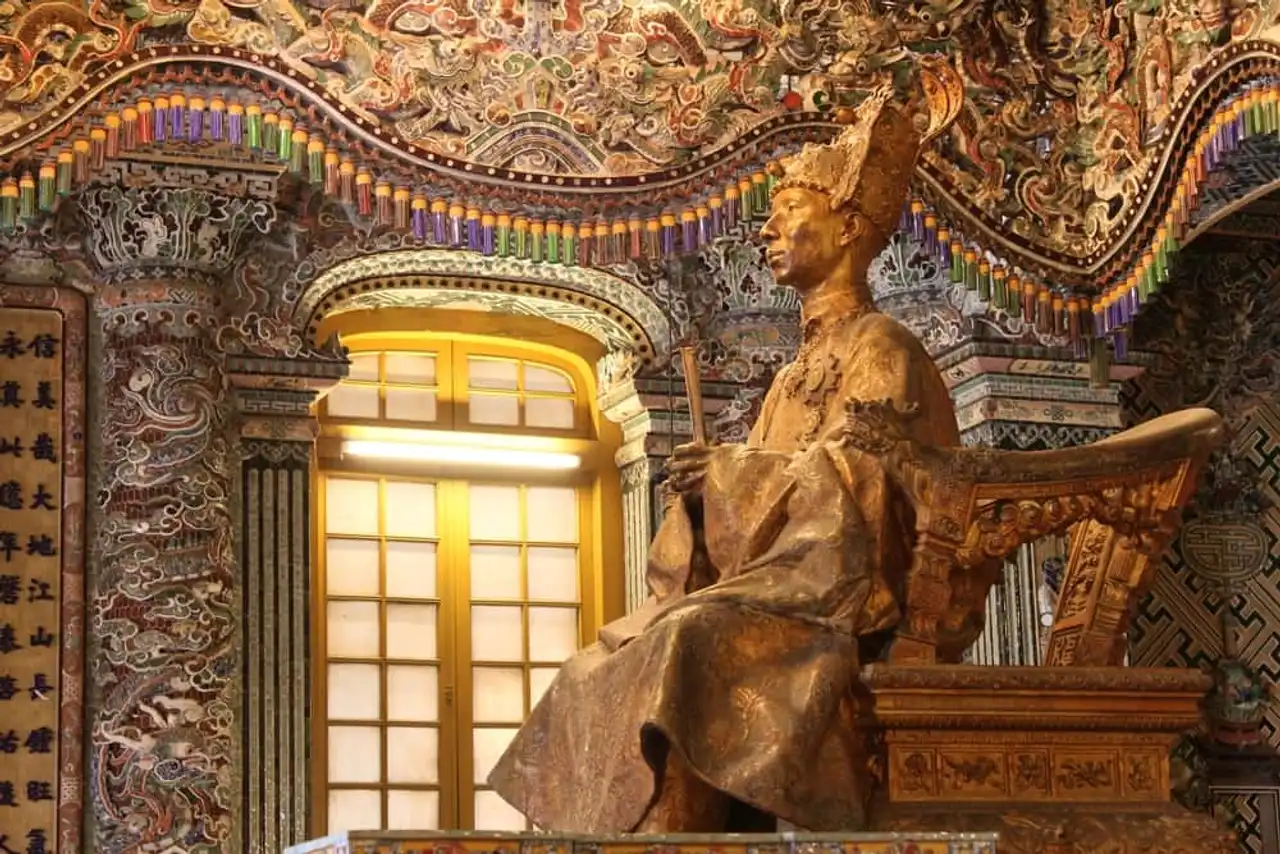
Photo credit: Shutterstock / netsuthep
HORARI
All the monuments of Huế are open every day:
- Summer from 6.30 a.m. to 5.30 p.m.
- Winter from 7 a.m. to 5.30 p.m.
RATES
Imperial City
- Adult 150,000 dongs (about 6 euros)
- Child 7 to 12 : 30,000 dongs (about 1.20 euros)
It should be noted that this rate includes the entrance to the Royal Aquities Museum at the Palais de Long An.
Mausolées de Minh Mng, Tự Đúc or Khải Đṭnh
- Adult : 100,000 dongs (about 4 euros)
- Child 7 to 12 : 20,000 dongs (about 75 cents of euros)
Mausolées de Gia Long, Thiévu Trégé, Đėng Khánh ou le Temple de Hòn Chén Price
- Adult : 40,000 dongs (about 1.50 euros)
- Free for children children under 12
Palais de An Đ Gobiernonh or Esplanade de Nam Giao
- Adult : 20,000 dongs (about 75 cents of euros)
- Free for children children under 12
Other sites are free, for both children and adults.
Post Three Monuments (Imperial City and Mausoleum of Minh Mng and Khải Đaggionh)
- Adult : 280 000 dongs (about 11 euros)
- Child 7 to 12 : 55,000 dongs (about 2.15 euros)
Four Monuments Ticket (Imperial City and Mausoleum of Minh Mng, Khải Đaggionh and Tự Đúc)
- Adult : 360 000 dongs (about 14 euros)
- Child 7 to 12 : 70,000 dongs (about 2.70 euros)
BON A LEARN
- The entrance is only made by the Ngo Môn (Porte du Midi), at 23, Thang 8.
- For 100,000 dongs per person, about 4 euros, you can borrow small electric cars to visit the Imperial City. Very convenient when the heat is overwhelming!
- Prefer a visit early in the morning to avoid the overwhelming heat and crowd. Always plan a bottle of water and a hat.
- In high tourist season, it is highly recommended to book your trips to Huế well in advance.
- The best times to visit Huế and its set of monuments are from February to April and from September to November.
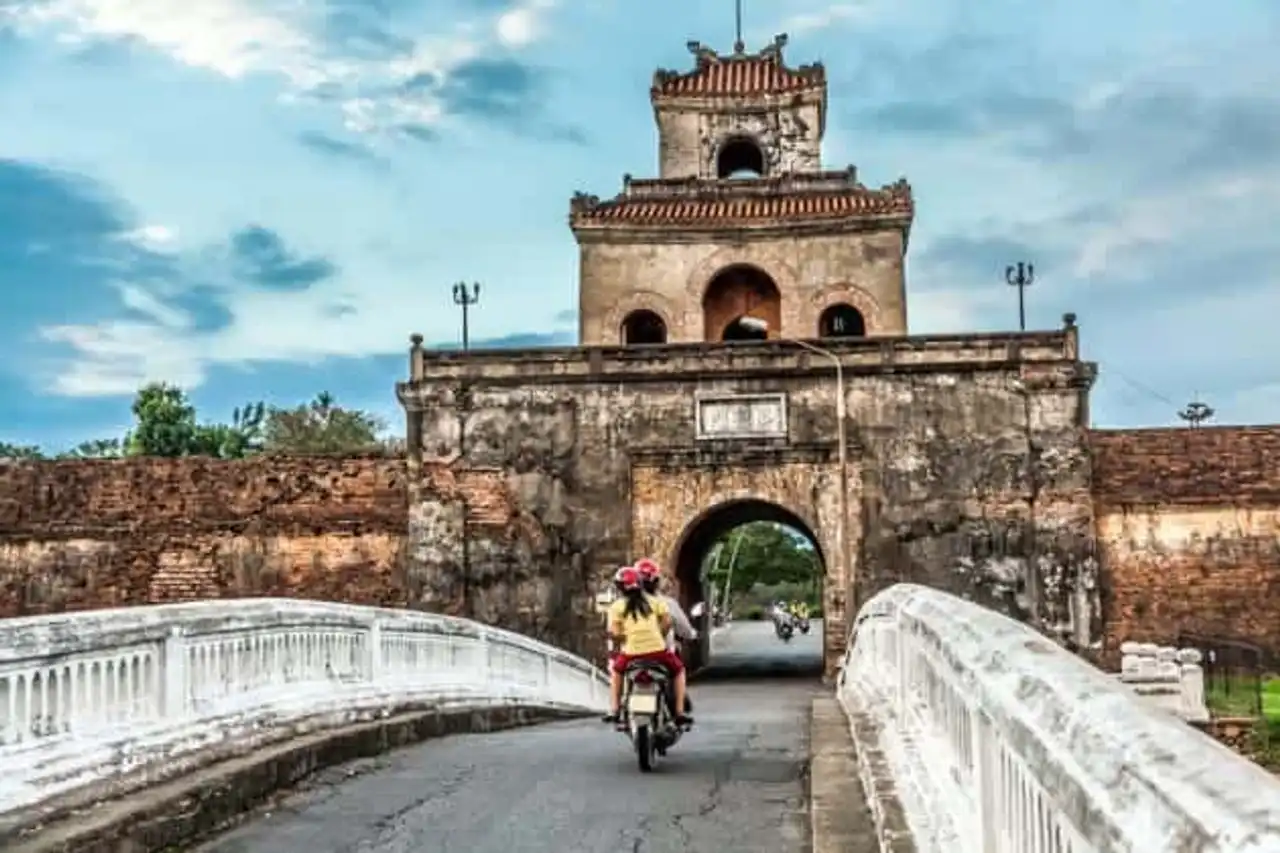




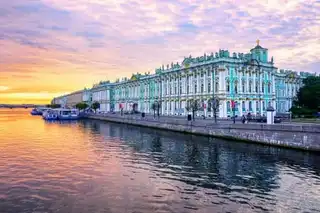
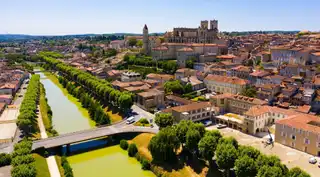
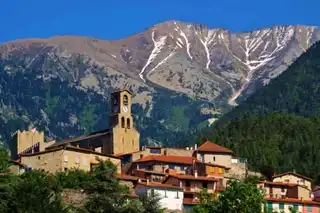
Loading comments ...